2014 Fantasy Baseball: Yovani Gallardo Has Taken the Right Step
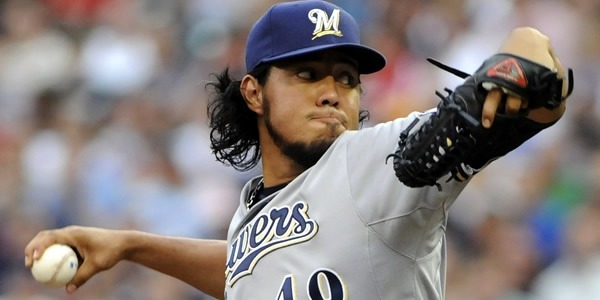

Sometimes, a headline can tell us enough of the story. We read it, we get it, we move on. But then there are those moments when a headline just isn’t enough and we need to find out more. This can happen with baseball numbers too, including sabermetrics. Some days, the basics that we are so used to looking at simply aren’t adequate. It is why scouts are still needed. It is why those in the SABR community continue to work hard, coming up with new ideas and innovations. And it is why MLB organizations need to investigate what a player is doing or not doing to the last detail. And it is why we need to do it too.
Today, our headline is Yovani Gallardo. This season, he’s posted a 3.23 ERA and a WHIP of 1.19, which has made him a valuable fantasy starter (even with the lack of strikeouts). Yet when you look at his BABIP (.264, career .293) and left-on base percentage (81.1%, career 75.9%), it’s easy to chalk all that success up to luck and believe he won’t be as valuable in the near future. After all, his FIP sits at 4.00, his highest since 2009. And his strikeout rate continues to decline. These few points could leave you to believe that the 28-year-old Gallardo is ready to revert back to what he has been the past couple of seasons: a high three, low four ERA pitcher with a WHIP in the 1.3’s. But what if he is doing something he has never done before?
In 2011, Gallardo barely threw a sinker. His repertoire consisted of a four-seamer, curveball, and slider, with the occasional changeup. This arsenal delivered strikeouts, which as we know are fantasy goodness. The following season, Gallardo’s four-seamer dropped a tick and it was getting hit hard, harder than ever (.216 .ISO-Against, .490 SLG-Against). In turn, the sinker usage rose during that 2012 season. The sinker wasn’t much in 2012, but now the pitch has become quite important to Gallardo’s success on the mound.
| Season | GB/FB | LD% | GB% | FB% | IFFB% | HR/FB |
| 2011 | 1.28 | 17.0% | 46.6% | 36.5% | 11.3 % | 12.7 % |
| 2012 | 1.51 | 20.9% | 47.7% | 31.5% | 4.0 % | 14.9 % |
| 2013 | 1.78 | 23.2% | 49.2% | 27.6% | 6.0 % | 11.9 % |
| 2014 | 1.88 | 18.3% |
53.3% |
28.4% | 4.9 % | 13.4 % |
| Total | 1.39 | 20.7% | 46.1% | 33.2% | 7.8 % | 11.3 % |
What Gallardo has become is a groundball pitcher. But that isn’t what’s revolutionary here. Gallardo has been progressing towards this label for the past three years, and last season he saw his K% drop under 20 percent for the first time in his career. There is something else that Gallardo is doing that may be the big game changer. The big difference maker.
Groundballs per BIP:
|
Year |
Fourseam |
Sinker |
Slider |
Curve |
| 2011 | 40.69 | 73.91 | 49.68 | 60.00 |
| 2012 | 39.29 | 42.67 |
61.44 |
53.19 |
| 2013 | 46.03 | 60.17 |
46.97 |
56.98 |
| 2014 | 47.50 |
62.00 |
58.95 |
50.00 |
(Click Here for Groundball Benchmarks, provided by our friends at Fangraphs)
Gallardo managed to get a lot of groundballs with the slider back in 2012, but this is the first time he is getting a ton of grounders with the sinker and slider. He gets below average whiffs with the slider and sinker, but the ridiculous amount of groundballs Gallardo is inducing with these pitches makes them quite exceptional.
But will this groundball duo last? Why was the slider less effective in 2013, than in 2012 and now? Is there a reason for it? Luck?
Well, it may mean nothing. It may mean everything. It may all be a coincidence. But if we are deciding to believe in Yovani Gallardo’s success, if we are trying to determine if we should sell or hold, or even buy, then perhaps this will sway you one way or another.
Yovani Gallardo has shifted where he is on the pitching rubber.
And this isn’t the first time he has done it. In 2012, when he was getting plenty of grounders with the slider, he was to the first base side of the mound.
2012:
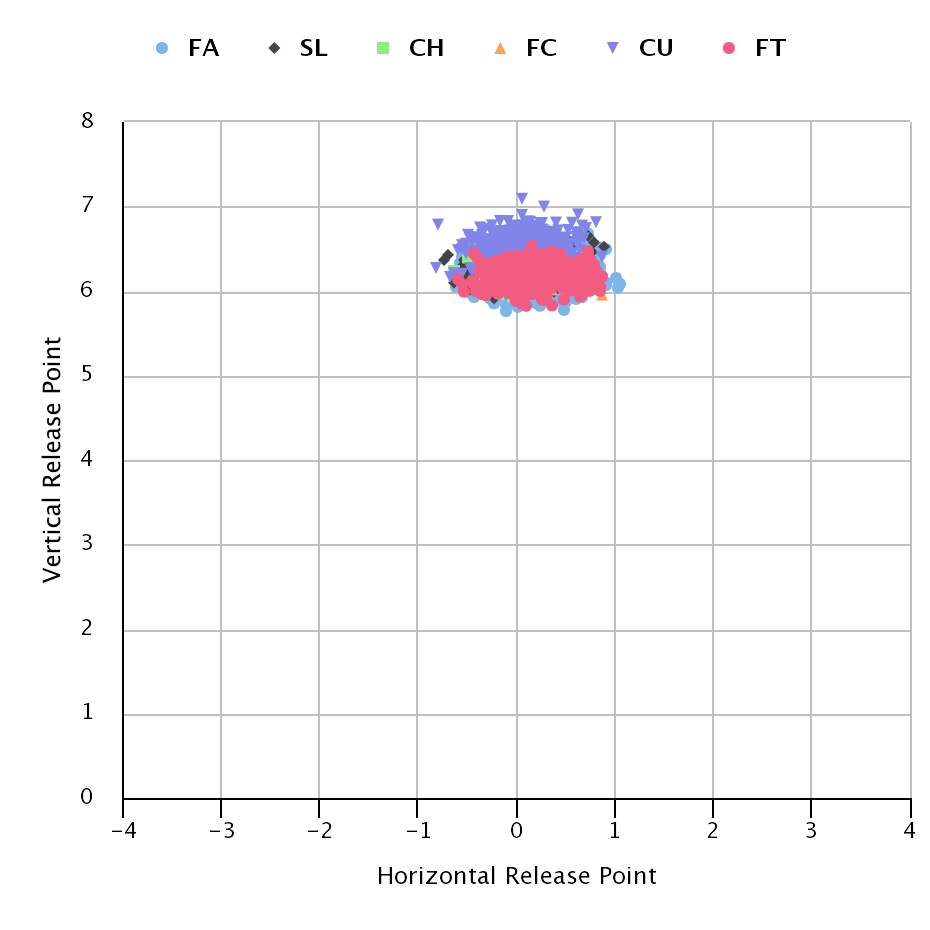
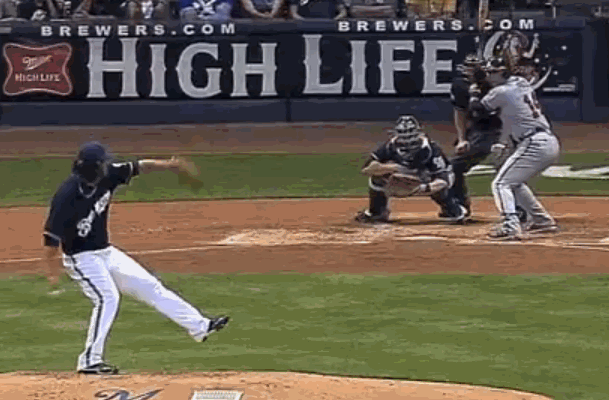
Then in 2013, most of the right hander’s delivery came from the third base side of the rubber and his groundball success with the slider wasn’t the same. He shifted back and forth some during this season, but ended with being on the third base side.
2013:
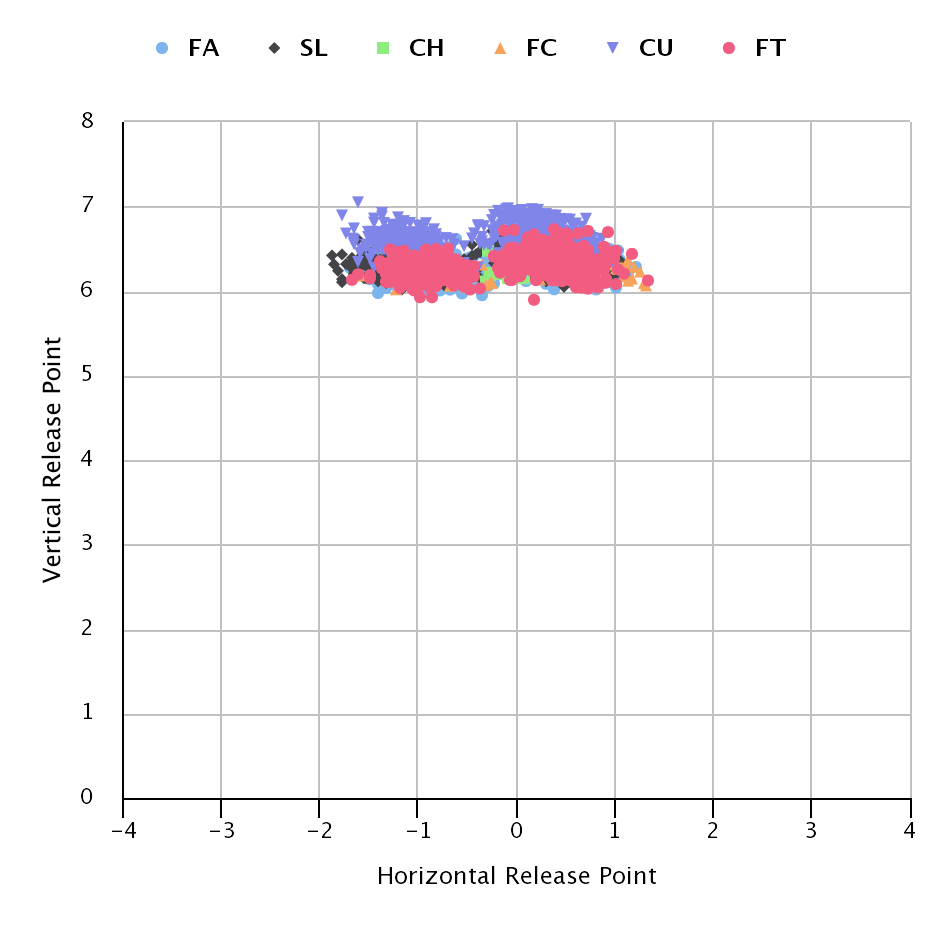
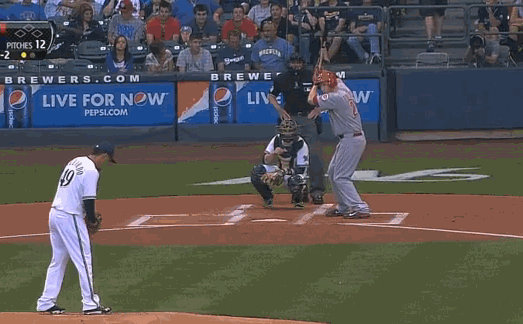
Gallardo continued to position himself on this end of the rubber for the early part of the 2014 season, but during his second start in May, he began the process of taking a step towards the first base side of the rubber. Since that time, Gallardo has stayed at the first base side of the rubber and when compared to last season, the groundball percentage on his slider has spiked.
It doesn’t appear Gallardo changes positioning based on the opponent, as he stuck with his position when facing left-handed or right-handed hitters.
2014:
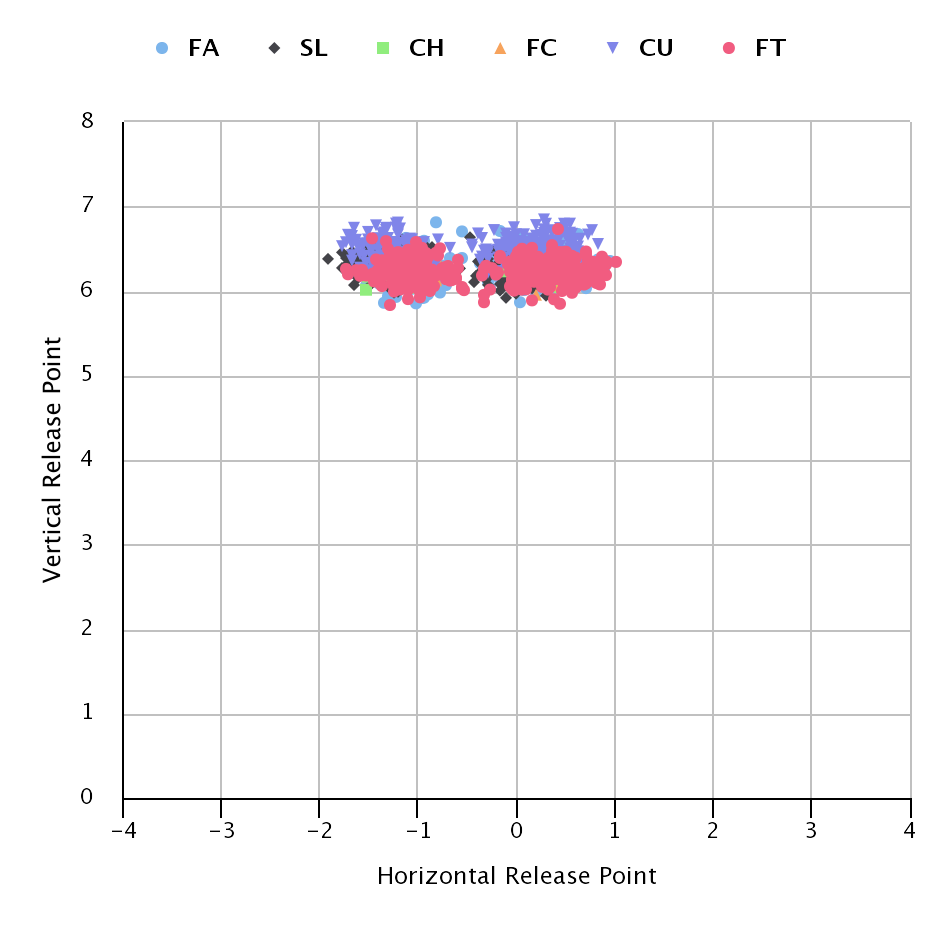
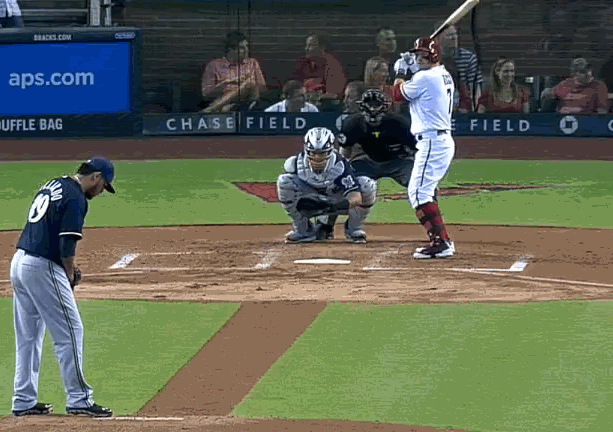
The movement on Gallardo’s pitches hasn’t changed and the velocity is about the same as it was a year ago, so there doesn’t appear to be a sudden improvement in stuff. Remember the story about mound positioning being all the difference for Fernando Rodney‘s success in Tampa? Could this be a similar situation?
Although he has lost some of his stuff since entering the league, Yovani Gallardo has tinkered and changed his way into remaining a quality pitcher. And in this case, one that is still fantasy relevant. The strikeouts aren’t close to what they were, and they may never come back, but Gallardo has limited the walks and found a way to generate plenty of grounders. If you were thinking of selling, believing his luck would soon run out, you may want to reverse course and hold. He may not give you loads of strikeouts anymore, and his fantasy potential may be capped, but Gallardo has taken the right step toward helping your fantasy team.





